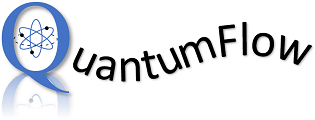[News] The tutorial is released on 12/31/2020! Happy New Year and enjoy the following Tutorial.
[News] QuantumFlow has been accepted by Nature Communications.
[News] Invited to give a talk at ASP-DAC 2021 for this tutorial work.
[News 09-20] Invited to give a talk at IBM Quantum Summit for QuantumFlow.
Recently, we proposed the first neural network and quantum circuit co-design framework, QuantumFlow, in which we have successfully demonstrated the quantum advatages in performing the basic neural operation from O(N) to O(logN). Based on the understandings from the co-design framework, in this repo, we provide a tutorial on an end-to-end implementation of neural networks onto quantum circuits, which is base of the invited paper at ASP-DAC 2021, titled When Machine Learning Meets Quantum Computers: A Case Study.
This repo aims to demonstrate the workflow of implementing neural network onto quantum circuit and demonstrates the functional correctness. It will provide the basis to understand QuantumFlow. The demonstration of quantum advantage will be included in the repo for QuantumFlow, which will be completed soon at here.
In the above figure, on the left-hand, it is the design framework for classical hardware (HW) accelerators. The whole procedure will take three steps: (1) pre-processing data, (2) accelerating the neural computations, (3) post-processing data.
Similarly, on the right-hand side, we can build up the workflow for quantum machine learning. It takes 5 steps to complete the whole computation: (1) PreP pre-processing data; (2) UP data encoding onto quantum, that is quantum-state preparation; (3) UN neural operation oracle on quantum computer; (4) M data readout, that is quantum measurement; (5) PostP post-processing data. Among these stpes, (1) and (5) are conducted on classical computer, and (2-4) are conducted on the quantum circuit.
This tutorial demonstrates how to do data pre-preocessing and encoding it to quantum circuit using Qiskit.
Let us formulate the problem as follow.
Given: (1) One 28*28 image from MNIST ; (2) The size to be downsampled, i.e., 4*4
Do: (1) Downsampling image; (2) Converting classical data to quantum data that can be encoded to quantum circuit; (3) Create quantum circuit and encode 16 pixel data to log16=4 qubits.
Check: Whether the data is correctly encoded.
Details please see Tutorial_1_DataPreparation.ipynb.
This tutorial demonstrates how to use the encoded quantum circuit to perform weighted sum and quadratic non-linear operations, which are the basic operations in machine learning.
Let us formulate the problem based on the output of Tutorial 1 as follow.
Given: (1) A circuit with encoded input data x; (2) the trained binary weights w for one neural computation, which will be associated to each data.
Do: (1) Place quantum gates on the qubits, such that it performs (x*w)^2/||x||.
Check: Whether the output data of quantum circuit and the output computed using torch on classical computer are the same.
Details please see Tutorial_2_Hidden_NeuralComp.ipynb.
This is a complete tutorial to demonstrates an end-to-end implementation of a two-layer neural network for MNIST sub-dataset of {3,6}. The first layer (hidden layer) is implemented using the one presented in Tutorial 2, and the second layer (output layer) is implemented using the P-LYR and N-LYR proposed in QuantumFlow. The model is pre-trained and the weights for hidden layer, output layer, and normalization are obtained (details will be provided in QuantumFlow github repo).
Let us formulate the problem from scratch as follow.
Given: (1) An image from MNIST; (2) The trained model.
Do: (1) Construct the quantum circuit; (2) Perform the simulation on Qiskit or execute the circuit on IBM Quantum Processor.
Check: Whether the prediction is correct.
Details please see Tutorial_3_Full_MNIST_Prediction.ipynb.
- Qiskit
- numpy
- torch
- torchvision
The work accepted by Nature Communications.
@article{jiang2020co,
title={A Co-Design Framework of Neural Networks and Quantum Circuits Towards Quantum Advantage},
author={Jiang, Weiwen and Xiong, Jinjun and Shi, Yiyu},
journal={arXiv preprint arXiv:2006.14815},
year={2020}
}
The work invited by ASP-DAC 2021.
@article{jiang2020machine,
title={When Machine Learning Meets Quantum Computers: A Case Study},
author={Jiang, Weiwen and Xiong, Jinjun and Shi, Yiyu},
journal={arXiv preprint arXiv:2012.10360},
year={2020}
}
Weiwen Jiang
Email: [email protected]
Date: 12/31/2020




